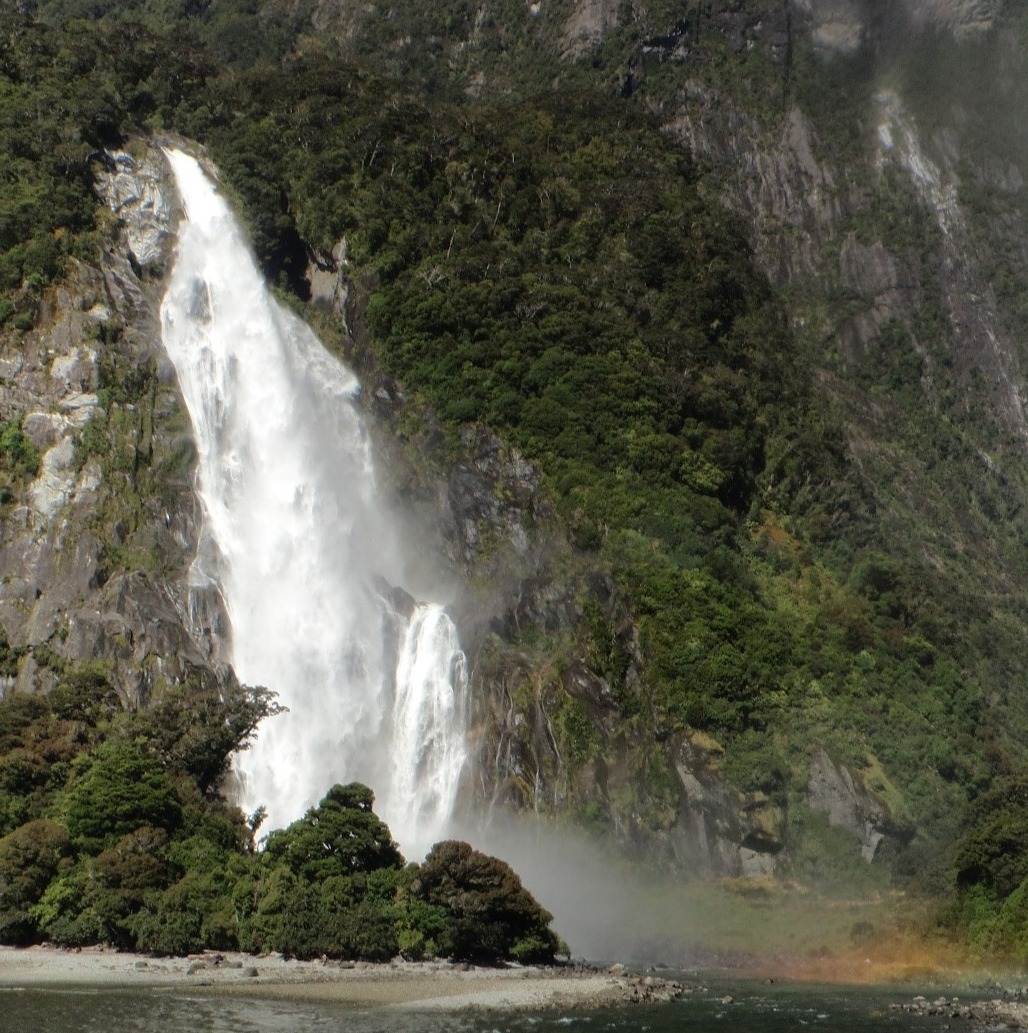A Geographer's Guide to Earth’s Climate History
Early last year, I travelled to New Zealand for a two-week field-trip with 25 fellow students. As you might guess, the trip was fantastic!
The field-trip was the main component of the geography subject, Global Climate Change in Context. We had two days of lectures and wrote a pre-field trip essay on how to uncover the secrets of Earth’s past climate changes. For instance, we investigated how you can extract information on past temperatures and atmospheric gas concentrations from ice cores, stalagmites and stalactites, and how scientists can tell what kinds of plants were on Earth thousands of years ago by examining pollen found in lake sediments.
With our background knowledge, we were off to New Zealand! Each day we travelled to a few spectacular locations, scribbling down notes, attempting sketches of rocks, and taking lots of photos.
We were exposed to amazing landforms and worked in groups to hypothesise how they were formed. After we had extinguished all probable solutions, the class came together to share our guesses and were guided to the likely formation hypothesis by our lecturer, Associate Professor Russell Drysdale.
Russell was basically our personal science tour guide, endlessly pointing out moraines (piles of rocks deposited by glaciers) and inserting a glacier fact into conversation as he drove us around New Zealand. We quickly became “experts” at pointing out moraines.
 My trip highlight was exploring a limestone cave. In a mythical-like journey, we caught a boat across a lake to reach the destined land, then trekked uphill through the forest in the rain to arrive at the mouth of the Aurora Caves. Donned from head to toe in waterproof wear, and capped off with a hardhat complete with torch, we entered the cave. With Russell and his PhD student, Hege, guiding us, we crawled and climbed through the darkness, under rocks and through streams, to explore the cave depths and uncover the secrets of ancient New Zealand climates.
My trip highlight was exploring a limestone cave. In a mythical-like journey, we caught a boat across a lake to reach the destined land, then trekked uphill through the forest in the rain to arrive at the mouth of the Aurora Caves. Donned from head to toe in waterproof wear, and capped off with a hardhat complete with torch, we entered the cave. With Russell and his PhD student, Hege, guiding us, we crawled and climbed through the darkness, under rocks and through streams, to explore the cave depths and uncover the secrets of ancient New Zealand climates.
Because everyone on the field trip was so enthusiastic and we were in such an amazing place with fantastic guides, I managed to learn loads without really trying. It was also the best opportunity to put to practice the theoretical knowledge from three years of environmental undergrad subjects.
After we returned home from the field trip, we had a few weeks of practical classes where we resumed typical science class activities (like creating Excel graphs), wistfully recalling the days of lectures atop New Zealand glaciers.
Further elongating the daydreams of sunny New Zealand, was the process (or really struggle) of condensing two weeks’ worth of photos, scribbled notes and sketches, along with expert research from scientific papers, into a succinct and comprehensive report.
This meaty document was a massive challenge, especially for a science student who had barely strung together more than a paragraph in three years of undergrad. But when completed, it was satisfying to have produced a story of Earth’s past climate changes interwoven with some of the photos, fun facts and interesting science from the field-trip. In fact, the field-trip report instilled me with the confidence that I could do further research and start a Masters of Earth Sciences. Plus the report stands as proof that you can actually learn a lot of science while holidaying around the New Zealand countryside.
To learn more about the practical science of glaciers, see here:
Unlocking past climates from New Zealand’s glaciers
Find out more:



